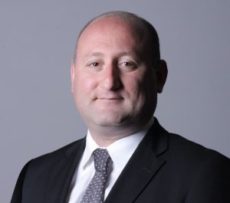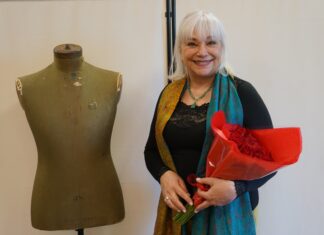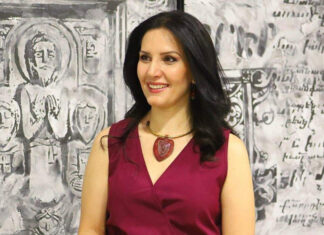By Aram Arkun
Mirror-Spectator Staff
BELMONT, Mass. — Dr. Bedross Der Matossian, assistant professor of Middle Eastern history at the University of Nebraska-Lincoln, spoke on his newly published book, Shattered Dreams of Revolution: From Liberty to Violence in the Late Ottoman Empire (Stanford University Press, 2014), at the National Association for Armenian Studies and Research (NAASR) on November 7. The lecture, presented with slides, was well attended, with approximately 90 people present. Marc Mamigonian, director of Academic Affairs for NAASR, introduced the speaker to warm applause.
Der Matossian spoke about the impact of the 1908 Young Turk revolution on the Armenians, Arabs and Jews of the Ottoman Empire. These three ethnic groups were organized in semi-autonomous bodies called millets. As non-dominant groups of the empire, they benefited from reforms of the 19th century, but many of the reforms were halted by Sultan Abdul Hamid II until the 1908 revolution conducted by the oppositional Young Turk movement. The next ten years constituted what became called the Second Constitutional Period of the empire.
Der Matossian explored the changes in the Ottoman Armenian community created by the revolution. He showed how power passed from the Armenian patriarch to the Armenian National Assembly, with the reinstatement of the Armenian National Constitution. Patriarch Maghakia Ormanian, who was accused of collaborating with the sultan, was replaced, along with many local prelates.










